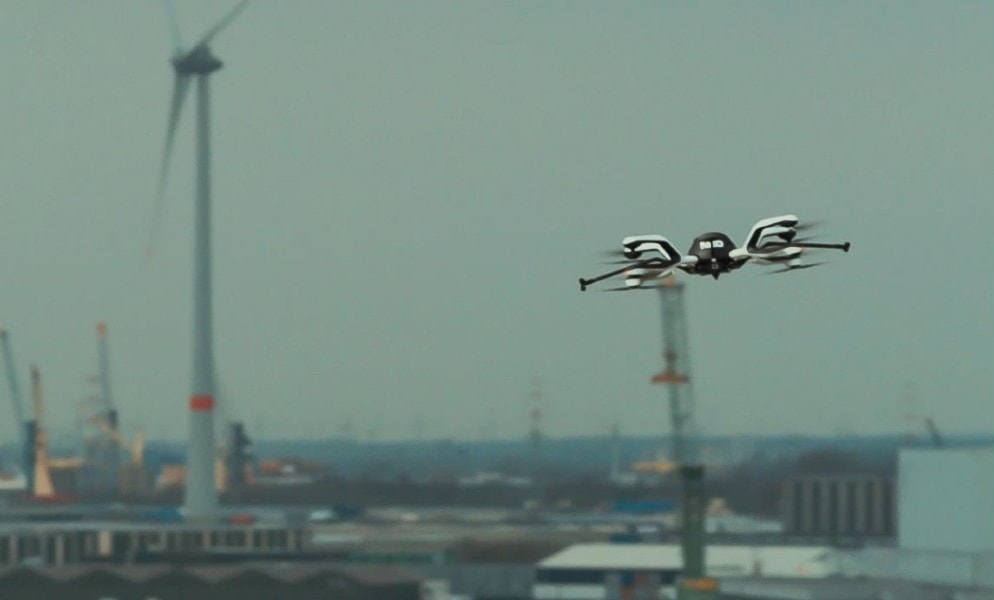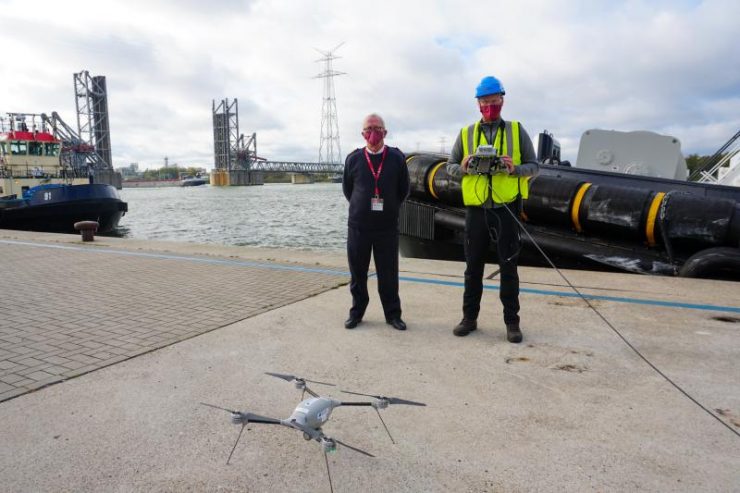Port of Antwerp Becomes First Non-Aviation Authority in the World that Can Grant Approvals for Flying UAVs in Controlled Airspace
BY Zacc Dukowitz
25 March 2021The Port of Antwerp in Antwerpen, Belgium recently announced plans to implement its own Unmanned Traffic Management (UTM) system.
The big news is that its UTM system will be overseen by the port and not by the Belgian Civil Aviation Authority.

Image credit: Port of Antwerp
UTM is a general phrase that refers to systems created to manage drone traffic.
In the case of the Port of Antwerp, its UTM system will be responsible for managing UAV traffic as well as any ground risks “related to above-the-ground [drone] activity” (source). In other words, the port will be in control of both the air and the ground as they relate to the port’s drone operations.
In general, flying in the port’s airspace requires permission from the Belgian Civil Aviation Authority, since it’s considered a no-fly zone (i.e., controlled airspace).
But with the implementation of its new UTM system, the Port of Antwerp will be able to grant these permissions itself, making it the first non-aviation authority in the world to be what, under E.U. drone regulations, is called a geozone manager.
What Is a Geozone Manager?
Under the E.U.’s Aviation Authority, the European Union Aviation Safety Agency (EASA), all no-fly zones in Europe fall under the watch of a geozone manager.
These geozone managers are, by default, the National Aviation Authority (NAA) in whatever country a drone pilot happens to be operating.
And geozone managers have the responsibility of manually approving or rejecting drone flights in no-fly zones within their borders.
The idea is the same here in the U.S.—if you want airspace authorization to fly in controlled airspace, such as the airspace in the five mile radius surrounding an airport, you have to ask the FAA for it. Or, to put it in the EASA’s terms, the FAA is the geozone manager for all controlled airspace in the U.S.
When it comes to getting these approvals, the big difference between the U.S. and European countries is that we have implemented instant airspace authorizations via LAANC, cutting out the slow manual review that can hold up approvals for long periods of time.
But the principle is the same. If you want to fly a drone where the law doesn’t allow it, you have to ask the relevant federal aviation authority for permission.
Except in the Port of Antwerp.
Now, in the Port of Antwerp, port authorities will be the ones to grant permissions for drone operations in the airspace surrounding the port.
The equivalent situation in the U.S. would be if the FAA ceded the authority to grant approvals for flights in controlled airspace surrounding a port to the people who ran the seaport.
Of course, this is almost impossible to imagine happening, but that impossibility just underscores why the Port of Antwerp becoming a geozone manager is a big deal, and a true global first.
How the Port of Antwerp Plans to Use Drones
Based on our research, the Port of Antwerp will be using drones primarily for surveillance and security.

Image credit: Port of Antwerp
According to a story the port shared on its website in October of last year, drones are already helping port personnel to monitor incidents that take place in the port, including oil spills.
Aerial surveillance is also being used by Port Authority Officers in their regular duties, providing extra intelligence on unfolding incidents, and presumably helping them monitor for smuggling or other illicit activities.
Here is what the Port of Antwerp says about how drones are currently supporting its operations (source):
The images [collected by drone] are not only useful to Port Authority Officers. During incidents, the drone quickly provides an overview of the situation. Its images can be accessed remotely by emergency and security services via a secure connection. The University of Antwerp will use any oil spill images to develop algorithms to automatically detect oil incidents.
To implement UTM in its airspace, the Port of Antwerp will be working with Unifly, a technology company that has rolled out UTM systems in Belgium, Canada, and Germany (among others).
Port of Antwerp [is] a global leader in innovation, deploying now the first UTM system for seaports in the world. Thanks to our close partnership with Port of Antwerp, we managed to develop this new value proposition UTM Seaports in record time.
– Leon van de Pas, CEO of Unifly
Unifly has already been collaborating with the Port of Antwerp for the last two years, conducting tests and demonstrations of UTM for drone operations in dense urban areas.
Excited to hear about the Port of Antwerp’s UTM system? Share your thoughts in this thread on the UAV Coach community forum.


